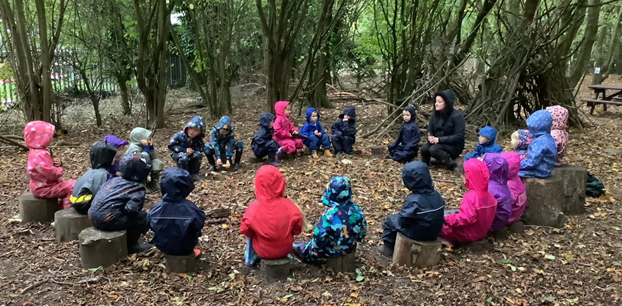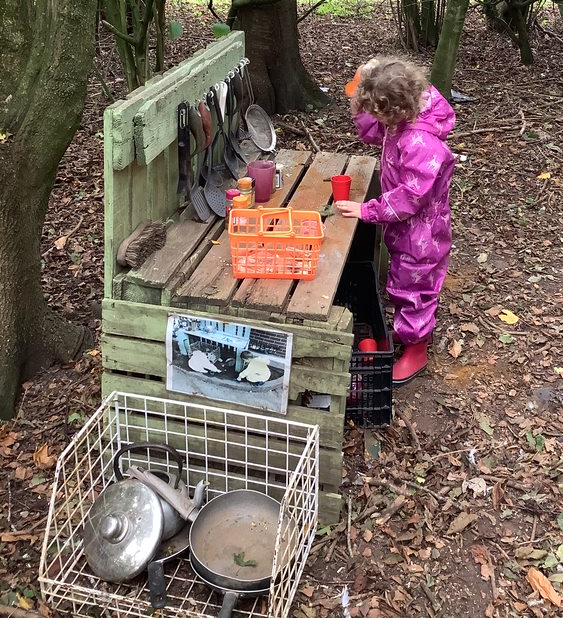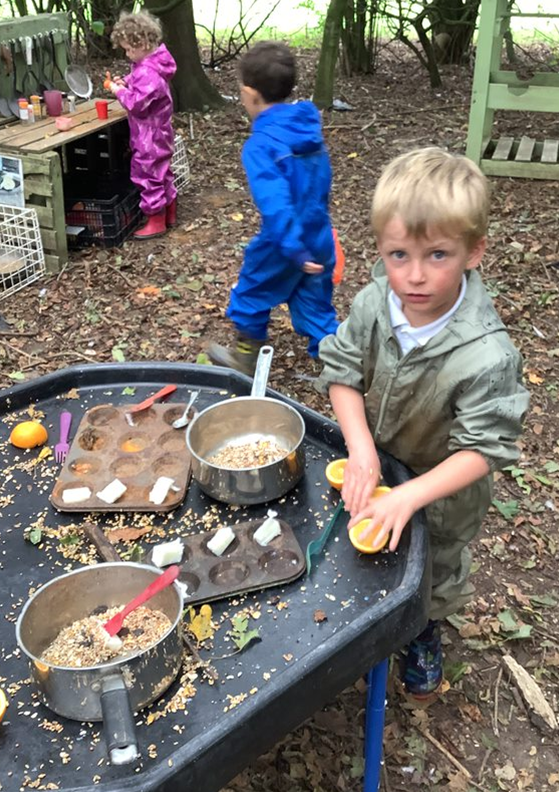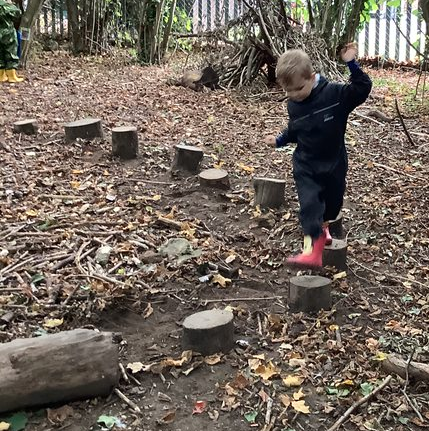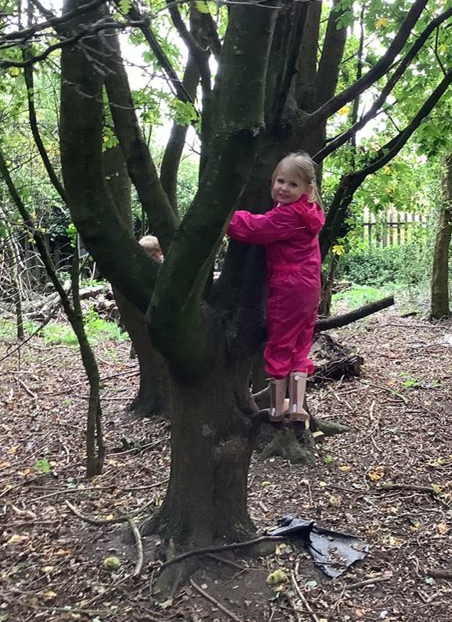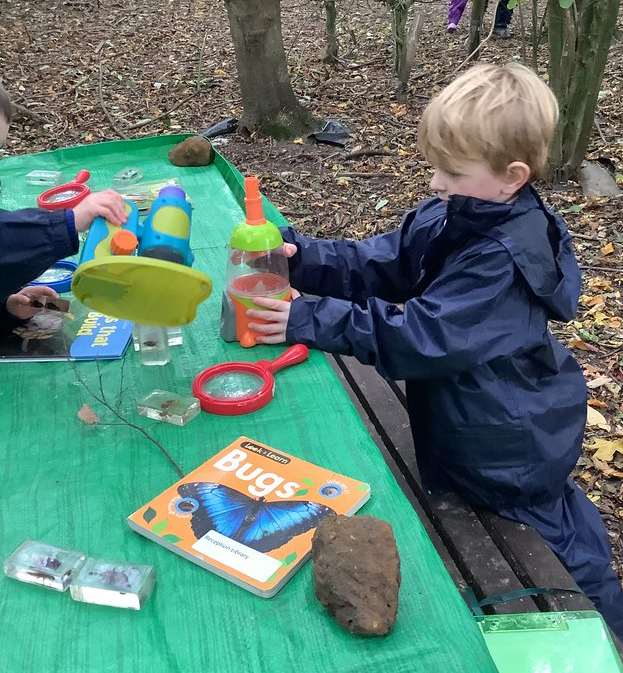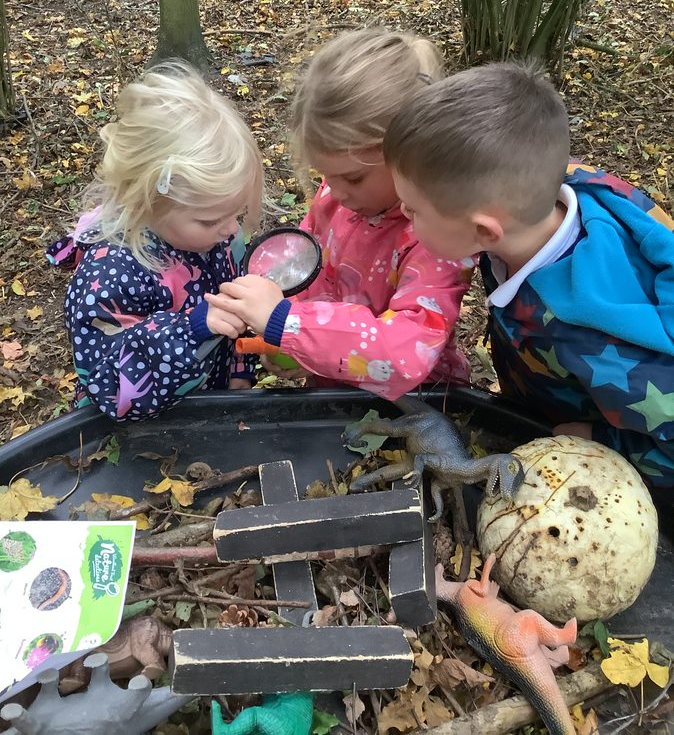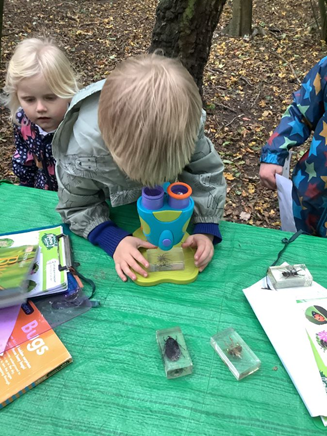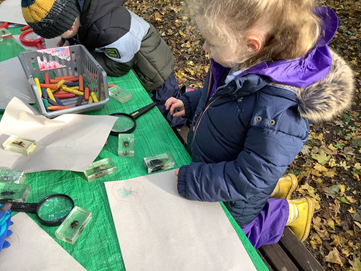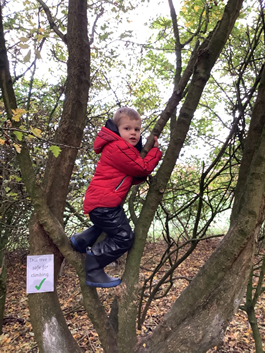Introduction to Forest School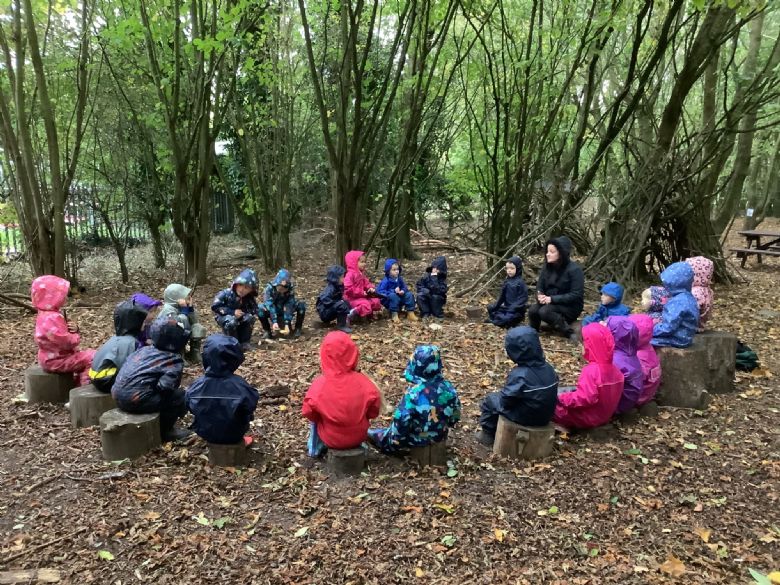
“Forest school offers children and young people the opportunity, over repeated visits, to engage with the rich natural diversity of the woodland environment to help build confidence, sensitivity, resilience and curiosity.”
Forest School Training Company
What is Forest School?
Forest School is an inspirational process, that offers ALL learners regular opportunities to achieve and develop confidence and self-esteem through hands-on learning experiences in a woodland or natural environment with trees.
Forest School is a specialised learning approach that sits within and complements the wider context of outdoor and woodland education.
The ethos is shared by thousands of trained practitioners across the UK and beyond. Its roots reach back to early years pioneers in outdoor learning and across the sea to Scandinavia.
In order for Forest School education to be called Forest School, the programme must follow a set of principles and a particular ethos.
These principles were first articulated by the Forest School Community in 2002. They were reviewed in 2011 and sent out for a 5-month consultation to Forest School networks and practitioners in all UK nations. They were published on the Institute for Outdoor Learning Forest School SIG page in Feb 2012, and in the minutes of the GB trainers’ network.
Principles of Forest School
Principle 1
Forest School is a long-term process of frequent and regular sessions in a woodland or natural environment, rather than a one-off visit. Planning, adaptation, observations and reviewing are integral elements of Forest School.
Principle 2
Forest School takes place in a woodland or natural wooded environment to support the development of a relationship between the learner and the natural world.
Principle 3
Forest School aims to promote the holistic development of all those involved, fostering resilient, confident, independent and creative learners
Principle 4
Forest School offers learners the opportunity to take supported risks appropriate to the environment and to themselves.
Principle 5
Forest School is run by qualified Forest School practitioners who continuously maintain and develop their professional practice.
Principle 6
Forest School uses a range of learner-centred processes to create a community for development and learning.
What does Forest School look like at North Wootton Academy?
Forest school is a unique and inspirational learning process where children can develop their self-worth alongside enriching all areas of their learning in a real-life context.
Forest school is a process that children at North Wootton Academy are honoured to be a part of, where they use their own ‘on-site’ woodland area.
It is a hands-on learning experience, personalised to each child and motivated by their own interests and passions.
We believe that developing emotional intelligence, self-esteem and social skills are the key foundations that a person needs, and time is taken to develop these. During Forest School, children will be motivated and feel empowered to achieve tasks and activities that challenge their individual aspirations in ways that they learn best.
In Forest School, children will develop an understanding and connection with the natural world, appreciate our rural surroundings, work with tools, play, explore, and learn the boundaries of behaviour by managing risks.
Examples of Forest School Activities
· Exploring the natural environment through their sense of awe and wonder.
· Den and shelter building to develop their own games and imaginative play.
· Camp fires and cooking
· Tree climbing and tree stump balancing
· Natural crafts
· Tool use (only when the Level 3 leader feels confidence from the individual).
· Scavenger/mini beast hunts
· Team building games
· Storytelling
Clothing
Children and adults will not be permitted to go to Forest School without appropriate clothing that protects them from extremes of heat and cold, keep them covered to reduce the risk of cuts and scrapes, that fits appropriately for comfort, and that meets any religious requirements.
Children and adults are encouraged to think about the practicalities of their clothing for outdoor activities and to be aware they are likely to get dirty. In the forest area, it is often cooler than expected under the trees.
Appropriate Clothing List:
· Waterproof trousers
· Waterproof coat, with a hood
· Long sleeved top/jumper
· Full length trousers/tights
· Wellies
· Warm socks (with a spare pair)
· Gloves and hats
· Sun hat
“There is no such thing as bad weather, only bad clothing.”
Staff need to be aware of how children in their class react to different weather conditions and how this affects their sensory processing.
We do have a large selection of spare clothing; however, not enough for everyone so having their own kit is easier.
Role of the Forest School Leader

My name is Mrs Emma Harley-Bond and I am the Forest School Leader at North Wootton Academy. It is my role to lead the Forest School planning, delivery of sessions and evaluations of the Forest School programme to each group of learners. It is also my role to take full responsibility of the policies and risk assessments ensuring they are followed at all times to ensure quality assurance and safe Forest School sessions. This will be supported by the signing of this handbook to show that everyone supporting at Forest School has read and agreed to the procedures in place in this document. During each session of Forest School, I will be supported by at least 2 teaching assistants from North Wootton Academy. I will only use North Wootton Academy staff to support sessions as they have all up-to-date DBS checks and all teaching assistants are first-aid trained in addition to me having my Outdoor First Aid qualification.
Within each Forest School session, I aim to observe children’s interactions with nature through child-initiated play. Observations of learners will include their self-esteem and self-confidence in addition to their social, emotional and physical development. I will also observe their creativity and intellectual development.
My role is to support, encourage, stand back and observe, without interference unless the children are putting themselves or others at risk. I introduce games and activities to help the children learn about the natural world, to recognise hazards and to assess potential risks to themselves and others.
Photo Gallery
